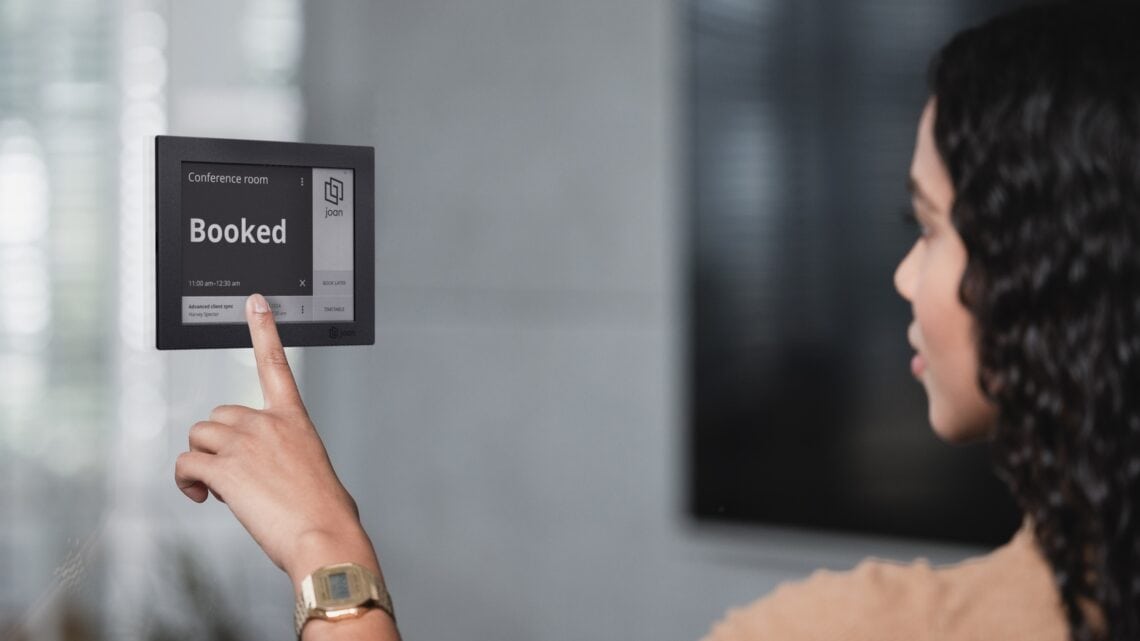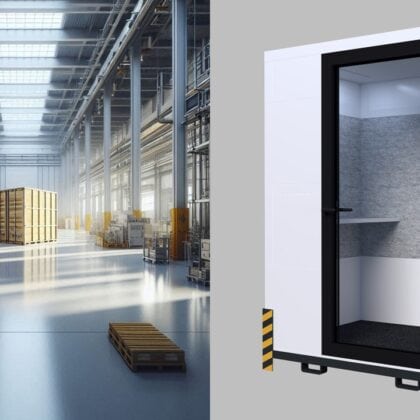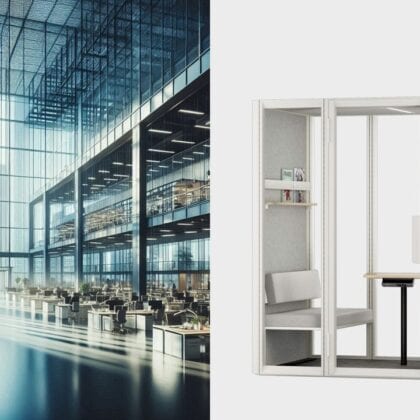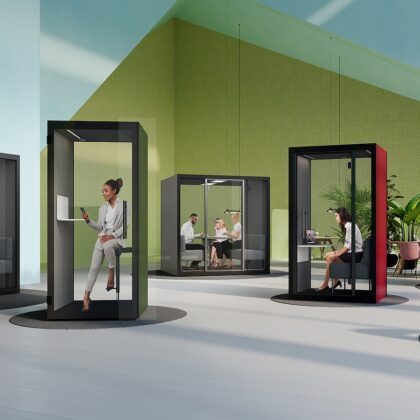Telephone and meeting boxes - once they have been purchased - are very popular with employees and places in the acoustic cubes are often hotly contested. One way to manage the rush is to integrate them into a room/desk booking tool in combination with appropriate displays.
In the following sections, we explain which options we consider useful.
Contents
Integrate acoustic boxes into an existing booking tool
For those who already use a room or even desk booking tool, integrating an acoustic cube into the existing booking software should be easy: add the meeting boxes or telephone boxes as a bookable resource and you're done.
Conflicting objectives: spontaneous use or by reservation only?
What still seems feasible for meeting boxes (after all, most meetings are scheduled in advance) quickly reaches its limits with telephone boxes: These are sometimes reserved by appointment (when you know you have an important call in your diary), but more often they are needed on an ad hoc basis (when you receive a spontaneous call that you would prefer to continue in the booth).
Displays as a solution component
If you want to enable your employees to use phone boxes spontaneously as well as make reservations in advance, you can use solutions with a display, for example. Advantage: Existing or upcoming reservations are shown on the display at each telephone box - it is just as easy to recognise available or free boxes without a reservation.
This variant works best with a combination of hardware (displays with WLAN connection) and software (booking tool, central synchronisation).
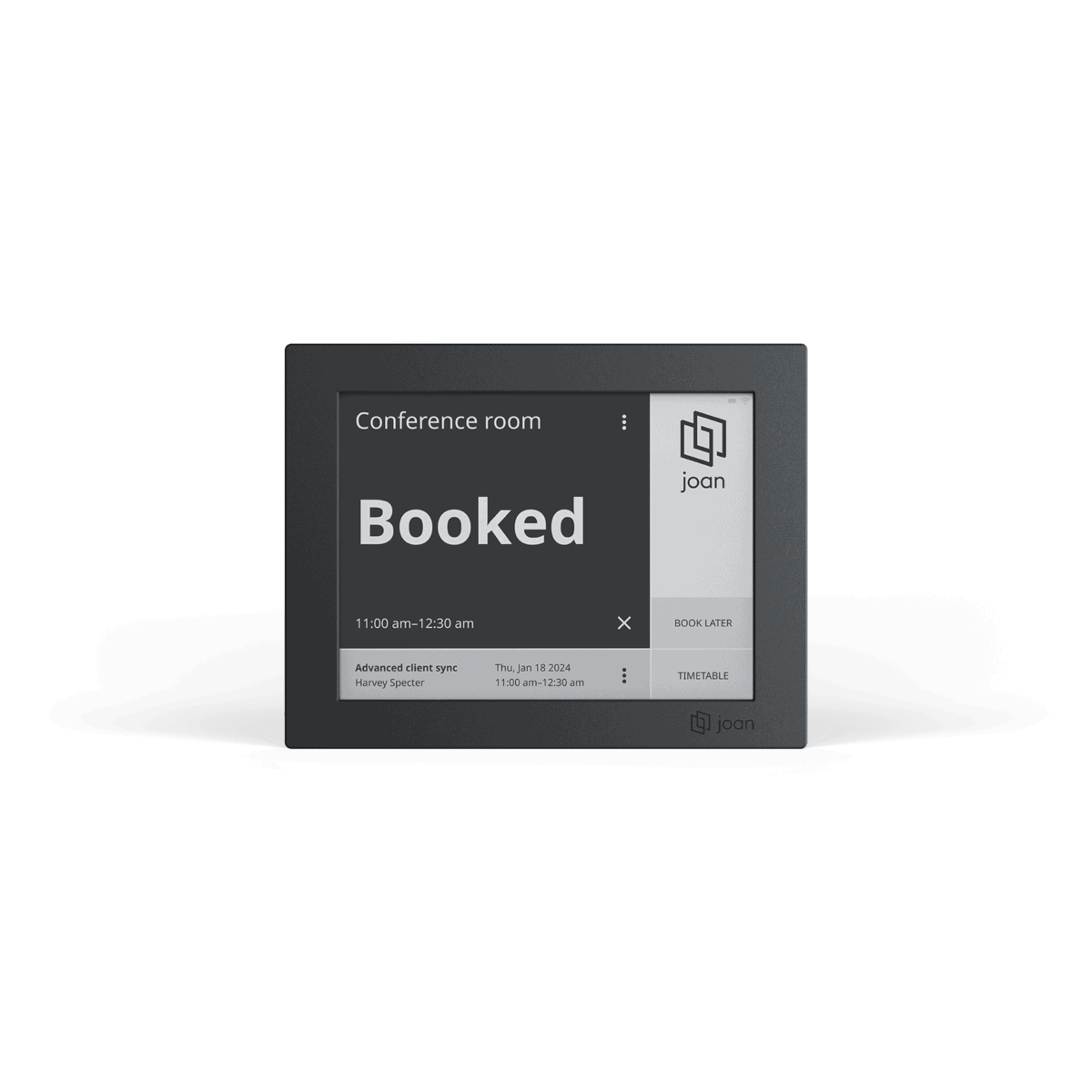

Room booking for acoustic cubes: booking tool, display or a combination of both?
Taking into account the possibilities offered by booking tools and display solutions, there are three different options for booking telephone and meeting boxes:
- Displays as a stand-alone solution: Bookings are only possible or permitted via the display. Both spontaneous and planned bookings must be made via the touch display. Another advantage: no registration or user account is required for bookings.
- Software as a stand-alone solution: Bookings can only be made via software; spontaneous use of an empty phone box (without prior booking) can lead to the box having to be vacated sooner than expected. QR codes on each box, which support spontaneous booking via software, can provide some relief here. Disadvantage: A user account is usually required for the software. Bookings by guests are not possible.
- Integrated solution: The combination of displays at each bookable box with a suitable software solution enables the best of the two aforementioned variants: Bookings can be made easily and spontaneously, but also in advance - both virtually via the software and directly on the display. Bookings can also be made on the display by guests without a software account.
Our recommendation: Goconut as a booking tool + displays
A particularly attractive and elegant solution for the integrated solution mentioned above is the Goconut booking tool in combination with the displays from the Joan product range. Goconut can also be used as a stand-alone solution (software) or just the displays.
Goconut and the displays in the Joan product range are compatible with all acoustic cubes in our range and can be retrofitted without any problems!
We will be happy to advise you on the Goconut booking tool and the displays in the Joan product range!
Questions, comments & personal advice
Are you missing any information or do you have any questions? Then please leave a comment below! You can also get free advice from us:

